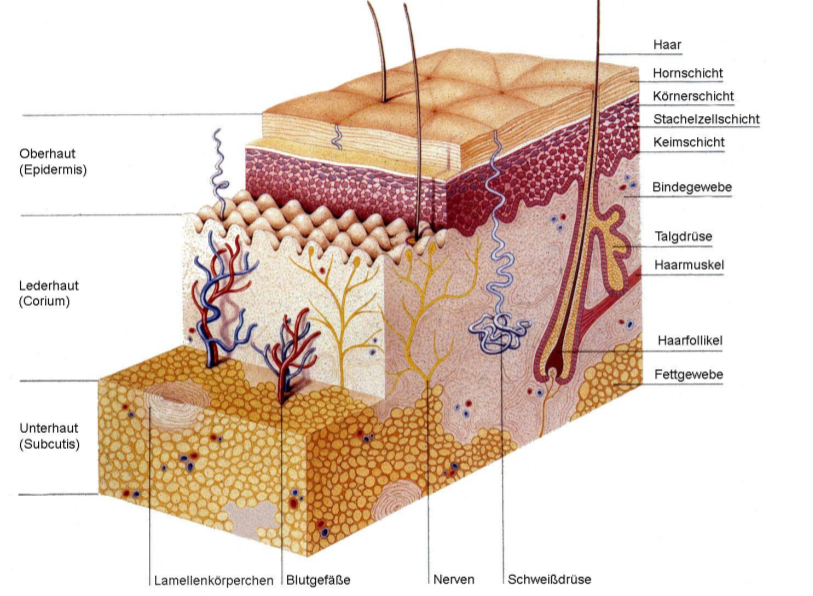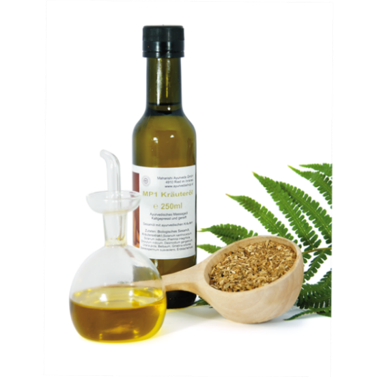Healthy skin in the cold season - Part 2
Now summer is finally over and autumn reigns. In Ayurvedic terms, this means that the Pitta season has been replaced by the Vata season.
Have you already changed something in your daily routine to better respond to the qualities of Vata?
The qualities of Vata include cold and dryness. Drinking more hot water and teas balances these qualities. Vata is also the most subtle and sensitive of the three doshas. Therefore, it is important to take special care of the outer shell of our body, the skin, now.
To protect it from all unfavourable external influences and to strengthen inner harmony, the classical texts recommend oil massages. Oil massages are particularly luxurious when they are performed by trained therapists, such as the Maharishi Ayurveda Pancha Karma Cures in our house.
But self-oil massages are also highly enjoyable and serve the same purpose. See our video of the Ayurvedic oil massage here .
Which oil should you use?
Depending on the dosha quality of the skin, different oils are particularly beneficial. In general, it can be said that the oils used for massage should be "matured". This means that they are briefly heated once to approx. 100°C. This makes them thinner and suspended substances that are unfavourable for massage flocculate and are filtered out. Matured oils absorb better into the skin and therefore nourish the different skin layers more effectively.
Structure of the skin
 The skin and the subcutaneous connective tissue are built up in layers. Fats are essential components of all layers. When the skin dries out, not only water but also fat is missing from the skin's structure. As a result, the skin becomes wrinkled and flakes off more quickly. It is also less able to fulfil its function as a protective organ of the body, not to mention the unfavourable cosmetic effect of wrinkled skin.
The skin and the subcutaneous connective tissue are built up in layers. Fats are essential components of all layers. When the skin dries out, not only water but also fat is missing from the skin's structure. As a result, the skin becomes wrinkled and flakes off more quickly. It is also less able to fulfil its function as a protective organ of the body, not to mention the unfavourable cosmetic effect of wrinkled skin.
For the formation of strong nails and hair, not only minerals such as zinc and silicic acid are necessary. Fats also play an important role as structural elements.
Almond oil
Almond oil is particularly fine and thin. It is best suited for delicate and sensitive skin. That is why it is most commonly used in baby care and facial cosmetics. It is nourishing and has a slightly cooling effect.
As part of a full body self-massage, the area with the most sensitive skin, the face and neck, can be treated with almond oil, while the other parts of the body are massaged with sesame oil.
Aged sesame oil
A virgin sesame oil is particularly thick and warming. By maturing (heating once up to 100°C) it becomes much thinner and thus penetrates well into the pores of the skin. In terms of Ayurvedic energy, it balances Vata in particular, but also Kapha. Pitta is increased. Therefore, people with typical Pitta skin (tendency to redness and inflammation) should avoid other oils.
Matured sesame oil is also recommended for people with Vata skin (dry, cracked, wrinkled) and with Kapha skin (oily with coarse skin patches), especially in the cold season. After application, it warms the whole body and protects the skin from the harmful effects of the cold.
Medicinal herbal oils
 Traditionally, sesame oil is used as a carrier substance for medicinal herbs. You will find this type of preparation in our MP1 and MP4 self-matured oils, and in Maharishi AyurVeda's Vata-, Pitta- and massage oils..
Traditionally, sesame oil is used as a carrier substance for medicinal herbs. You will find this type of preparation in our MP1 and MP4 self-matured oils, and in Maharishi AyurVeda's Vata-, Pitta- and massage oils..
Modern research has shown that the skin can absorb healing information from herbs and medicines very well. On their way through the skin, the substances of the medicinal plants reach the target organs before they are changed and possibly deactivated in the liver circulation.
The use of medicinal herbal oils is strongly favoured in the classical texts.
Olive oil
While cold-pressed virgin olive oil is one of the best oils for nutrition, a thinner matured olive oil should be used for massage oil application.
Olive oil is sweetly bitter and has cooling properties. Therefore, it is especially suitable for oil massage in the summer months or as an alternative to sesame oil when the latter causes skin irritation due to its heating properties.
Castor oil
In Ayurveda, castor oil is mainly used internally as a particularly effective and gentle means of cleansing the intestines in the so-called virechana therapy. Castor oil is strongly warming and has a sweet, pungent, nutty taste.
Its use for bowel cleansing should be supervised by a doctor. It is rightly warned against permanent misuse as a laxative for daily use. In Ayurvedic Virechana therapy, however, it is used to thoroughly empty the small intestine where disease toxins (ama) have accumulated through specific preparatory therapy. This also removes part of a possibly unfavourable intestinal flora. After the intestinal cleansing, it is thus possible for "healthier" intestinal germs to settle.
Castor oil is also used externally because of its nourishing, anti-pruritic and anti-inflammatory effect. Typical applications are rubs on the scalp for hair loss and dandruff, compresses for inflamed joints and warm stomach compresses for flatulence.
Summary
Matured oils should be used for Ayurvedic oil massages because they are thinner and penetrate better through the pores of the skin. This allows them to better fulfil their own nourishing effect and their function as a carrier of medicinal herbs.
Depending on the skin type and season, warming or cooling oils should be used. Cooling oils include almond and olive oil, while warming oils include sesame and castor oil.


We look forward to your feedback!